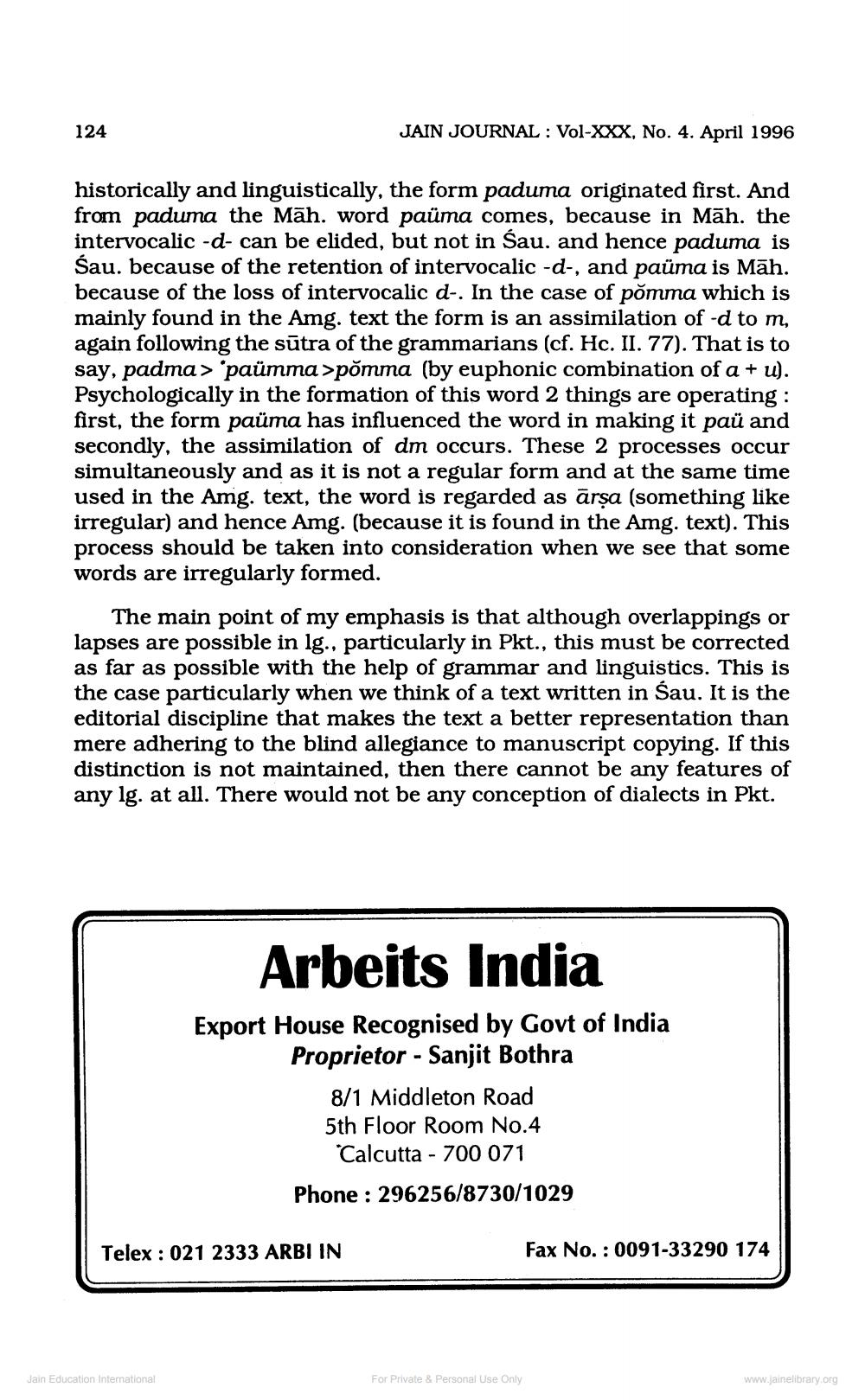________________
124
JAIN JOURNAL : Vol-XXX, No. 4. April 1996
historically and linguistically, the form paduma originated first. And from paduma the Māh. word paüma comes, because in Māh. the intervocalic -d- can be elided, but not in Sau. and hence paduma is Sau. because of the retention of intervocalic -d-, and paüma is Māh. because of the loss of intervocalic d-. In the case of põmma which is mainly found in the Amg. text the form is an assimilation of -d to m, again following the sūtra of the grammarians (cf. Hc. II. 77). That is to say, padma> 'paümma >pomma (by euphonic combination of a + u). Psychologically in the formation of this word 2 things are operating :
the form paüma has influenced the word in making it paü and secondly, the assimilation of dm occurs. These 2 processes occur simultaneously and as it is not a regular form and at the same time used in the Amg. text, the word is regarded as ārsa (something like irregular) and hence Amg. (because it is found in the Amg. text). This process should be taken into consideration when we see that some words are irregularly formed.
The main point of my emphasis is that although overlappings or lapses are possible in lg., particularly in Pkt., this must be corrected as far as possible with the help of grammar and linguistics. This is the case particularly when we think of a text written in Sau. It is the editorial discipline that makes the text a better representation than mere adhering to the blind allegiance to manuscript copying. If this distinction is not maintained, then there cannot be any features of any lg. at all. There would not be any conception of dialects in Pkt.
Arbeits India
Export House Recognised by Govt of India
Proprietor - Sanjit Bothra
8/1 Middleton Road 5th Floor Room No.4
Calcutta - 700 071 Phone : 296256/8730/1029
Telex : 021 2333 ARBI IN
Fax No. : 0091-33290 174
Jain Education International
For Private & Personal Use Only
www.jainelibrary.org




